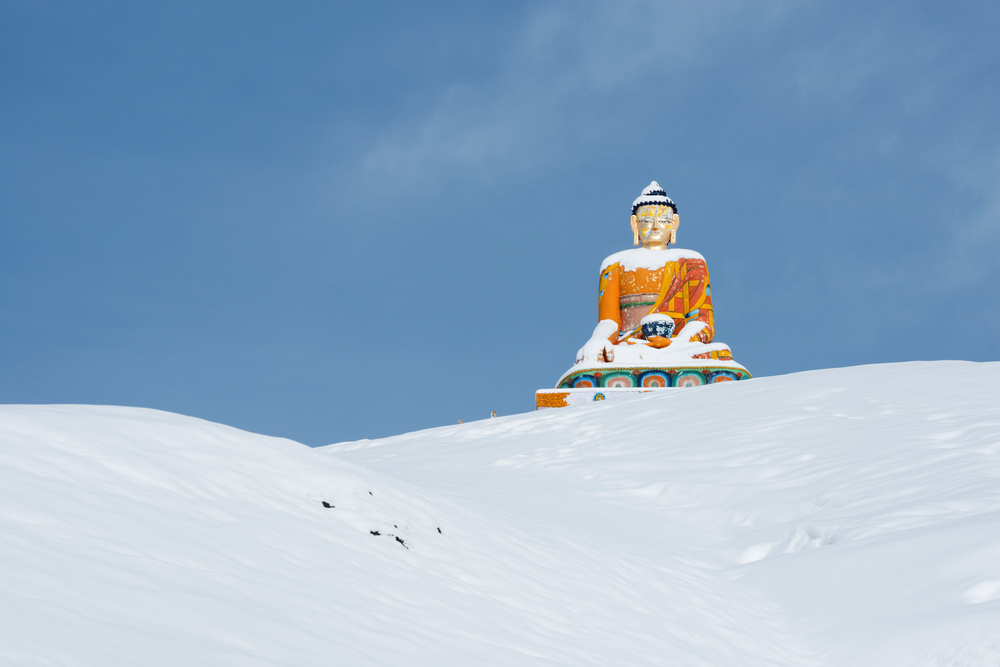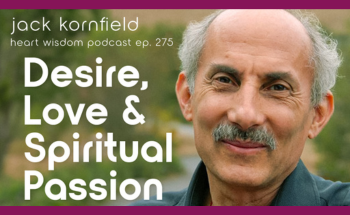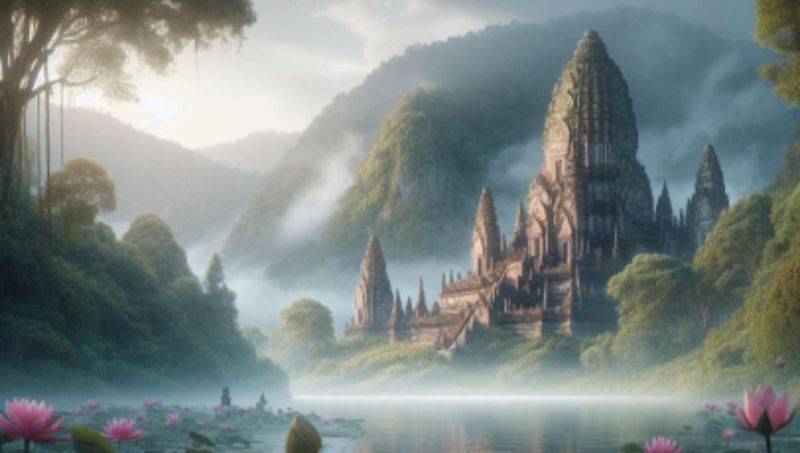“Learning the Middle Path, the life of balance, allows the heart’s natural awareness and compassion to grow. We become free and gracious.” – Jack Kornfield
One December, the Western monks at my Thai teacher Ajahn Chah’s western forest monastery decided to put up a Christmas tree. The villagers who built and served the monastery got upset and came to Ajahn Chah to complain. They said, “We have devoted ourselves to build and support a forest monastery for the Western monks, and now they’re having a Christmas celebration. It doesn’t seem right to us.”
Ajahn Chah reflected and then said, “Well, in the simple way I have been told, Christmas is a holiday that celebrates the birth of goodwill and the spirit of generosity and kindness. As far as I’m concerned that is beneficial for all. It is very much in the spirit of the teaching of Buddhism. But since you are concerned, the monks won’t celebrate Christmas anymore. Instead, we will call it ChrisBuddhamas.” They all laughed and with that, the villagers were content and went back home.
Ajahn Chah taught us to be kind and flexible, “The point is to learn how to let go and be free, how to be happy.” This story is a reminder not to cling to ideals but to follow the path of kindness and respect. The Middle Path is one of balance and care, where the heart’s natural awareness and practical compassion can grow. Through this, we become gracious and free.
Ajahn Chah encouraged us to use our Dharma practice to come to the natural freedom of the heart, beyond all forms and conditions. He said, “The original heart/mind shines like pure, clear water with the sweetest taste. But if the heart is pure, is our practice over? No, we must not cling even to this purity. We must go beyond all duality, all concepts, all bad, all good, all pure, all impure. We must go beyond self and nonself, beyond birth and death. When we see with the eye of wisdom, we know that the true Buddha is timeless, unborn, unrelated to anybody, any history, any image. Buddha is the ground of all being, the realization of the truth of the unmoving mind.”
Ajahn Chah’s way of teaching combines the ultimate level of Dharma with the practical level. The ultimate level invites us to see the timeless dance of existence, all arising and passing, days, experiences, eons, and galaxies alike. The practical level teaches us to take care of the moments we are given, to live with impeccability and compassion, to sweep the paths with mindfulness, delight, and fullness, to be honest with ourselves and caring with others. He wouldn’t let people get caught in either level. To help us find freedom, Ajahn Chah taught about selflessness, the essential realization of the Buddha’s liberation, in simple and remarkable ways. “If our body really belonged to us, it would obey our commands. If we say, ‘Don’t get old,’ or ‘I forbid you to get sick,’ does it obey us? No, it takes no notice. We only rent this house, not own it. In reality there is no such thing as a permanent self, nothing solid or unchanging that we can hold on to. The idea of self is merely a concept. Ultimately no one exists, only elements that have combined temporarily. There is no me, there is only anatta, nonself. To understand nonself, you will have to meditate. If you only intellectualize, your head will explode. When you see beyond self, you no longer cling to happiness, and when you no longer cling to happiness, you can begin to be truly happy.”
One day I had a further conversation with Ajahn Chah about this Buddhist teaching of nonself and he said, “Nonself, anatta, is not true.” This was an amazing thing for a Buddhist teacher to say. “It’s not correct,” he said, “because self is one extreme and nonself is the other extreme. What is true is neither of those, because both are concepts. Things are as they are.” In the midst of the strict discipline and impeccable training of the monastery, Ajahn Chah had a great laugh and a playful spirit. He reminded us that the sole task of Buddhism is to help people be happy and free, develop their heart’s resources, and open to what’s true. From surrender, seeing clearly, and learning how to deal with the mind in a balanced way, “you yourself can become a Buddha.” To know Ajahn Chah over many years brought great joy into my life. His spirit of freedom and simplicity was contagious. His maturity and delight in the Dharma brought all he touched closer to liberation.
When Ram Dass, Joseph Goldstein, I, and others left Ajahn Chah in 1977, he said, “When Thai people come to me and only ask for amulets, clay buddhas, or blessing rituals, they insult themselves. Now you have come to ask me questions. You want somebody outside to teach you the Dharma. You insult yourself, too, because the truths discovered by the Buddha are already in your heart. There is a One Who Knows within you who already understands and is free. If you can turn towards this natural awareness and rest in it, then everything will become simple.” He went on, “Over the years you can deepen your freedom in many ways. Use your natural awareness to see how all things come and go. Let go and live with love and wisdom. Don’t be lazy. If you find yourself lazy, fearful, or timid, then work to strengthen the qualities that overcome it. With natural wisdom and compassion, the Dharma will unfold by itself. If you truly dedicate yourself, you will come to the end of all doubts, you will be liberated. You will live in that place of silence, of oneness with the Buddha, with the Dharma, with all things. Only you can do that.”






